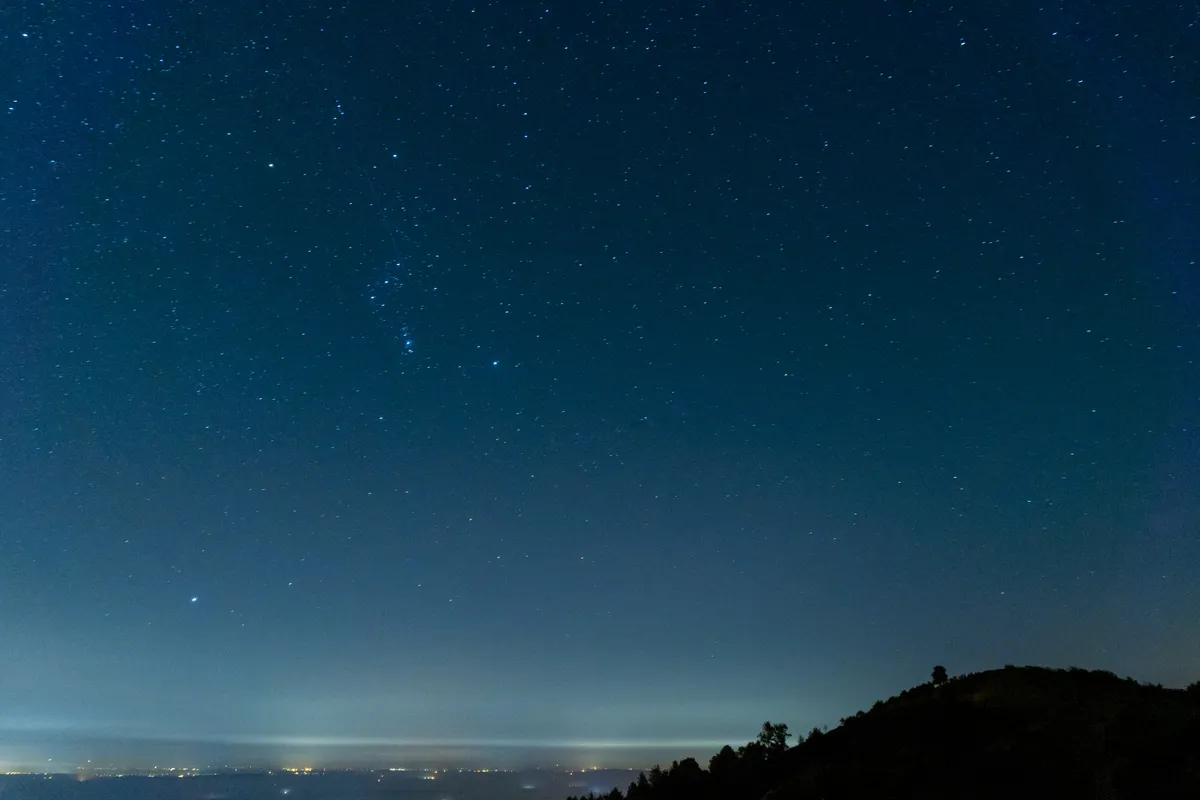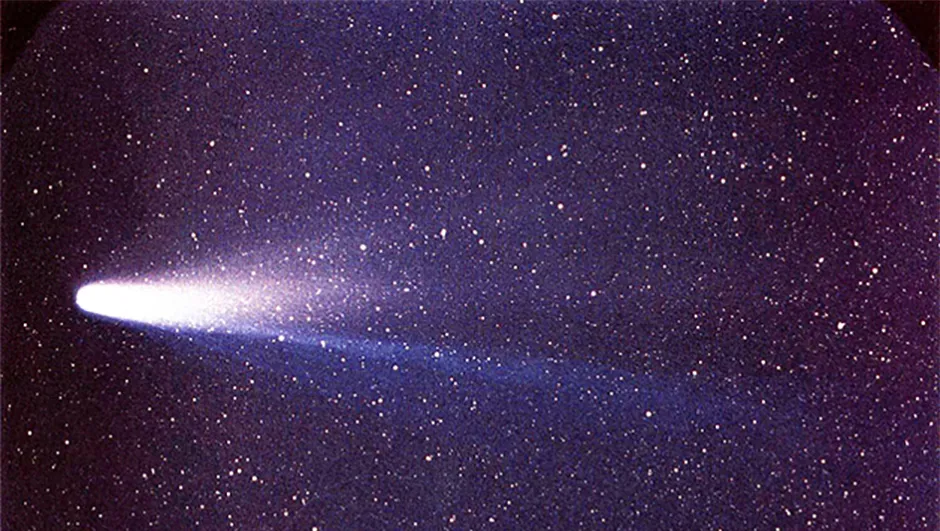The Orionid meteor shower takes place every year from 2 October - 7 November and is one of the best autumn meteor showers.
Orionids are caused by Earth passing through dust strewn around the orbit of comet 1P/Halley, producing a peak zenithal hourly rate (ZHR) of 20-plus meteors per hour.
For advice on which meteor showers occur throughout the year and how to observe them, read our guide to the next meteor shower and our tutorial on how to photograph a meteor shower.

Where to look to see the Orionids
Perspective makes meteor showers appear to emanate from a patch of sky referred to as the radiant.
In the case of the Orionids, this is located near the star Betelgeuse (Alpha (α) Orionis), the red supergiant marking the northeast corner of Orion’s main pattern.
Radiants aren’t fixed in the sky; moving from day to day, a shower is active.
Some, like August’s Perseids, move a fair distance, while others like November’s Leonids only move a small amount.
Between 2 October and 7 November, when the Orionids are active, its radiant moves roughly from west to east by about 25°. Peak activity occurs when the radiant is located within Orion’s borders.

Moon phase for the Orionids 2025
When observing a meteor shower, the Moon is key.
If the Moon is full and bright during the meteor shower's peak activity, it will wash out many of the meteors from the sky.
The good news for the Orionids in 2025 is that the Moon is new on 21 October, so there will be no moonlight interference.
The Orionids peak is expected at 13:00 BST (12:00 UT) on 21 October, which makes the nights of 20/21 and 21/22 October the best for spotting them.
If the skies are clear, we’d recommend watching from 21:30 BST (20:30 UT) through to dawn on 19–23 October.
Find a dark location away from artificial lights and with a good view of the whole sky.
Wrap up warm and get comfortable – a reclining chair or sun lounger are ideal for long meteor watches. Look up at an altitude of around 60°.
You can look in any direction, but due south is most interesting.
Orionid meteor shower explained

Although not the richest of the year’s meteor showers, the Orionid meteor shower is a firm favourite.
Meteor showers are typically (but not always) associated with comets. As a comet orbits the Sun, it releases dust.
Earth passes through these dust streams every year and, when this happens, the number of meteor trails seen increases.
Peak activity occurs when we pass through the densest part of the stream
Fom our perspective the incoming trails appear to originate from the shower radiant, which slowly moves over the duration of the shower.

Credit: NASA/W. Liller - NSSDC's Photo Gallery (NASA)
Orionid meteors appear to emanate from the direction of the constellation Orion, and are the result of Earth passing through the orbital dust stream of comet 1P/Halley - Halley's Comet.
This is the second of two meteor showers associated with Earth’s crossing of the orbit of comet 1P/Halley
The first is the Eta Aquariids in early May, which are difficult to see from the UK due to their low southern aspect.
Halley’s Comet returns to perihelion – its closest point to the Sun, every 76 years, and was last in this position on 9 February 1986.
For more on this, read our guide what causes a meteor shower.

How many Orionid meteors will we see?
At their peak, the Orionids have a ZHR (Zenithal Hourly Rate) of around 20 meteors per hour.
The ZHR isn’t the number of meteors you should expect to see, but rather what the shower is capable of given perfect conditions and with the shower radiant directly overhead.
For UK viewers, the visual hourly rate will normally always be lower than the stated ZHR.
The Orionids can produce good trails as long as you give yourself time to become properly dark adapted and spend a period of at least 30–60 minutes outside, looking up.
Below we'll tell you all you need to know about observing an Orionid meteor.
How to see the Orionid meteor shower

From the centre of the UK, the Orionids' radiant approaches an altitude of around 50°, due south, just before the onset of dawn.
Its location on the peak night is near the ‘club’ held aloft by Orion, northeast of Betelgeuse (Alpha (α) Orionis) and just to the west of Alhena (Gamma (γ) Geminorum).
Orionid meteor shower top tips
- Find a comfortable, dark location away from artificial lights and with a clear horizon.
- Wrap up warm even if temperatures are fairly mild at the session’s start.
- Using a garden chair, a recliner, sunbed or astronomy chair is a good idea to prevent neck cramp.
- Allow about 20 minutes for your eyes to adapt to the darkness and you'll see more meteors.
- If possible, view in groups: you'll have more eyes on the sky to spot a meteor.
- Take it in turns to note down meteors as others spot them, creating a record of your observations.
- Use a red light to help preserve your dark-adapted vision. Turn your phone's screen red too.
- Look about 60° up in the sky. Any direction, the south having some good constellations to enjoy.
- The radiant is close to Betelgeuse: trails near this point will appear shortest, those 90˚ from this point appear longest.
- If you can trace the trail of a meteor back to Orion, chances are you've seen an Orionid meteor
If you observe or photograph the Orionid meteor shower this year, share your observations and images with us by emailing contactus@skyatnightmagazine.com

